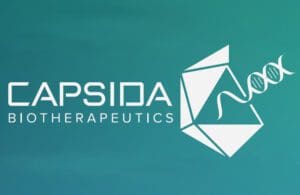 The gene therapy platform company Capsida Biotherapeutics (Thousand Oaks, California) is gearing up to unveil initial data on its engineered adeno-associated virus (AAV) capsids at the upcoming American Society of Gene & Cell Therapy (ASGCT) 26th Annual Meeting, held May 16–20 in Los Angeles.
The gene therapy platform company Capsida Biotherapeutics (Thousand Oaks, California) is gearing up to unveil initial data on its engineered adeno-associated virus (AAV) capsids at the upcoming American Society of Gene & Cell Therapy (ASGCT) 26th Annual Meeting, held May 16–20 in Los Angeles.
In developing these capsids, Capsida Chief Scientific Officer Susan Catalano explained that the company employed directed evolution and a high-throughput screening platform to optimize capsid performance across key domains. “We start with a disease and aim to create the best possible therapy, as opposed to trying to mold a disease profile around the limitations of wildtype capsids,” Catalano said.
Preliminary results suggest these engineered AAV capsids can reach up to 68% of neurons across multiple brain regions when delivered intravenously. That finding could translate to new possibilities in gene therapies targeting common neurological diseases that have resisted conventional treatment approaches.

Susan Catalano
“A majority of neurological disorders require correction across and throughout many different neural circuits, and it’s only through that extensive circuit coverage that the most meaningful therapeutic benefit will be achieved,” Catalano said, predicting that the company’s capsids could address neurological diseases in extensive adult populations.
Hope for enhanced neuron reach and reduced liver toxicity
Capsida’s initial data showed the reduction of liver transduction by five-fold compared to wild-type AAVs. “High-dose gene therapy utilizing wildtype capsids has been associated with liver toxicity in the clinic, seriously limiting its applications,” Catalano said. In addition to anticipating a considerably lower dosage as a result of optimized efficacy, Capsida anticipates a substantial decrease in liver burden to contribute to the improvement of its capsids’ safety profile.
A fully integrated gene therapy company, Capsida has created a capsid engineering platform that optimizes for capsid tropism and other critical aspects of the capsid contributing to the overall drug substance. “Our platform is focused on engineering an ideal drug substance as opposed to just one aspect of the capsid,” Catalano explained.
Strategic collaborations back Capsida’s mission to combat neurodegenerative and ophthalmology diseases
Capsida collaborators include AbbVie, Lilly and CRISPR Therapeutics. “Each of these partners are seeking approaches to deliver therapeutic cargo to patients with serious neurodegenerative diseases,” Catalano said.
“The therapeutic areas that are the basis for our collaborations with AbbVie, Lilly and CRISPR are focused on CNS diseases,” she added. After forging a collaboration with AbbVie in 2021, the company decided to explore Capsida’s platform more broadly in ophthalmology diseases.